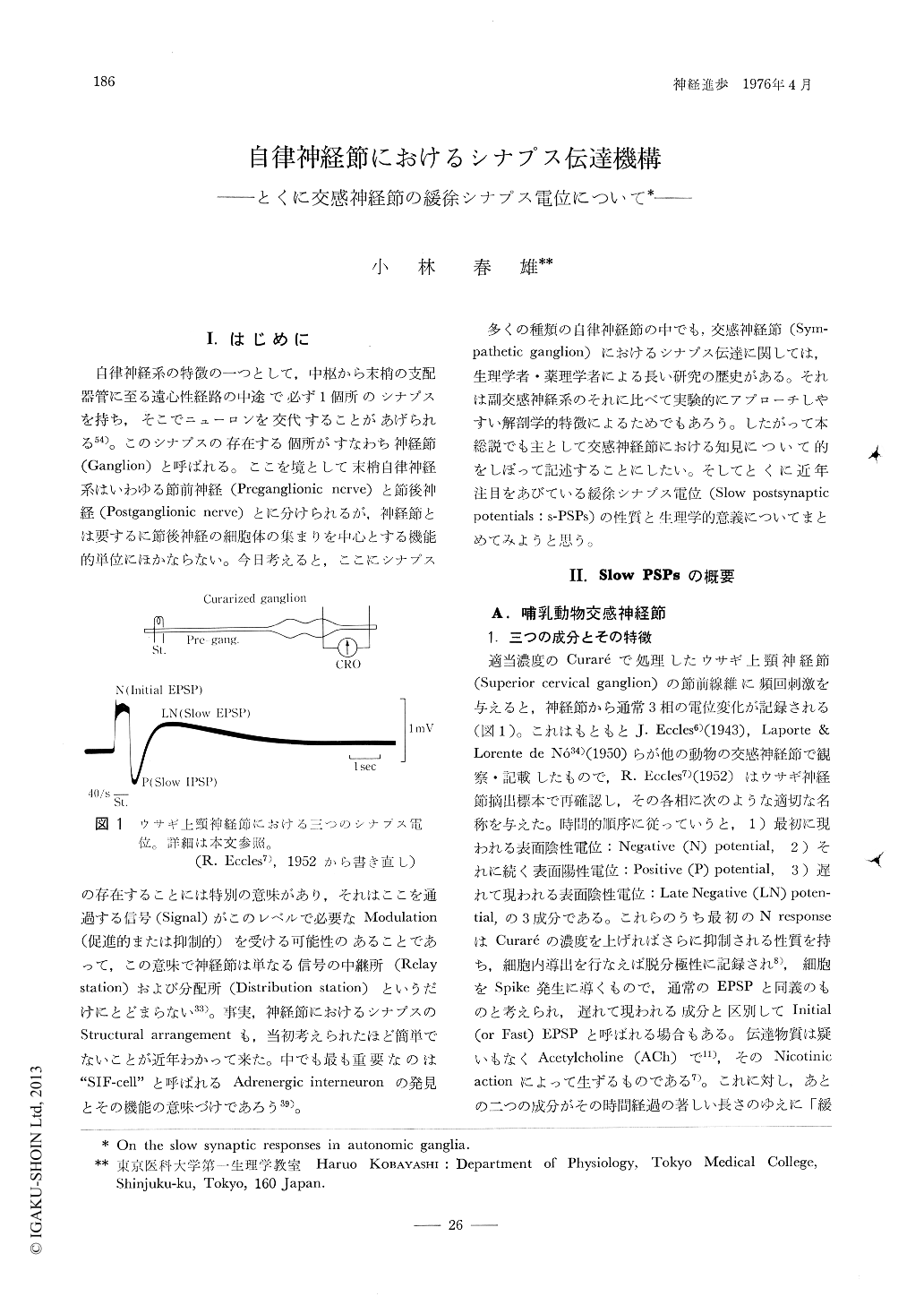Japanese
English
- 有料閲覧
- Abstract 文献概要
- 1ページ目 Look Inside
Ⅰ.はじめに
自律神経系の特徴の一つとして,中枢から末梢の支配器管に至る遠心性経路の中途で必ず1個所のシナプスを持ち,そこでニューロンを交代することがあげられる54)。このシナプスの存在する個所がすなわち神経節(Ganglion)と呼ばれる。ここを境として末梢自律神経系はいわゆる節前神経(Preganglionic nerve)と節後神経(Postganglionic nerve)とに分けられるが,神経節とは要するに節後神経の細胞体の集まりを中心とする機能的単位にほかならない。今日考えると,ここにシナプスの存在することには特別の意味があり,それはここを通過する信号(Signal)がこのレベルで必要なModulation(促進的または抑制的)を受ける可能性のあることであって,この意味で神経節は単なる信号の中継所(Relay station)および分配所(Distribution station)というだけにとどまらない33)。事実,神経節におけるシナプスのStructural arrangementも,当初考えられたほど簡単でないことが近年わかって来た。中でも最も重要なのは"SIF-cell"と呼ばれるAdrenergic interneuronの発見とその機能の意味づけであろう39)。
The principal cells of the vertebrate sympathetic ganglia usually respond to suitable preganglionic stimuli with three types of postsynaptic potentials (PSPs): an initial excitatory one (initial or fast EPSP), a slow inhibitory one (s-IPSP) and a slow excitatory one (s-EPSP). In rabbit ganglia each ganglion cell can exhibit all of these three responses, whereas in frog the s-EPSP appears to be elicited only in the B-neurons and the s-IPSP in the C-ones.

Copyright © 1976, Igaku-Shoin Ltd. All rights reserved.


